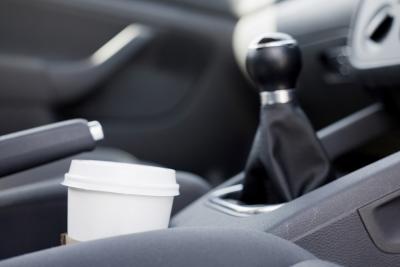
A standard-shift car requires the manual shifting of gears from low to high to enable the car to increase speed, rather than with the help of an automatic transmission, which shifts the gears for you. Learning how to drive a standard-shift car can be frustrating, but with some tips and instructions you will find the process much less painful than you thought.
Before beginning your standard driving instructions, find a friend who is patient and willing to teach you on his vehicle. At first, the ride can be rough, so it is important for you to be comfortable with your instructor. Find a location such as a parking lot where there are no other vehicles nearby and you have plenty of room to operate without worrying too much about steering the car.
In a standard car, there are three pedals. From left to right there is the clutch, the brake pedal and the gas pedal. Become acclimated to the clutch and shifter of the car you are learning on. The role of the clutch is to transmit motion in a car, and it can be engaged or disengaged. Letting up on the clutch (engaging it) allows the car to move forward while pressing down on the clutch (disengaging it) allows the car to drift in a neutral state. With the emergency brake on, push in the clutch with your left foot and move the gear shift into second gear while slowly releasing the clutch. Repeat this for all the gears until you are familiar with the motion and feel comfortable with your seating position.
Before starting the car, get used to the idea that you cannot hurt the vehicle no matter how much the car lurches during your lesson. You may grind the gears a bit, but do not let that bother you.
Starting the car in first gear is the most difficult part of driving a standard car. Get the feel of tapping your foot on the gas pedal with your right foot while letting off (engaging) the clutch with your left foot. Whenever you hear the engine begin to drag, tap harder on the gas pedal. Many first-time standard drivers allow the car to stall for fear of taking off too quickly. Do not worry if you stall the car several times and remember that it doesn't harm the car.
Knowing when to shift takes a great deal of practice because you must get to know the sound and feel of your standard car. Once your car is rolling along comfortably in first gear, listen to the engine. When the car’s RPMs (revolutions per minute) increase to a few thousand and you hear the engine become strained, you will know it is time to shift. Disengage the clutch, shift into second gear and then engage the clutch again.
Driving on hills can be more hazardous than driving on a flat surface because you must be faster with your footwork—engaging the clutch and starting in first—in order to keep your car from rolling backward into another car.